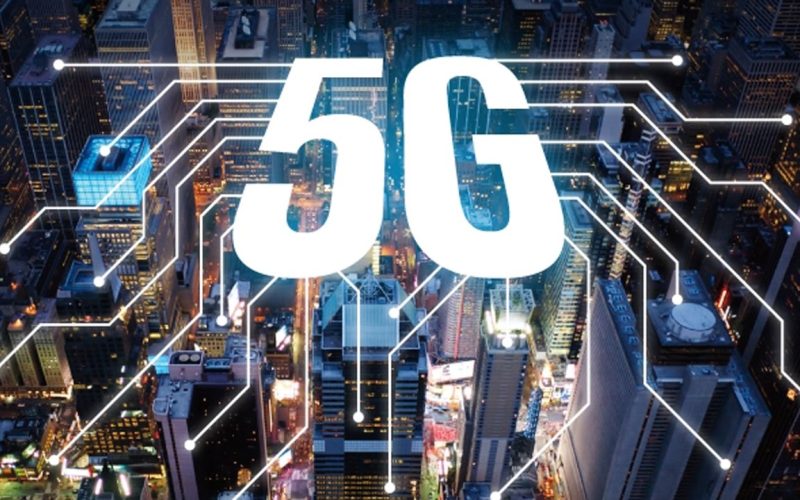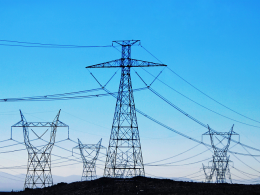The advent of 5G technology marks a monumental shift in how we interact with the digital world. Beyond the promise of faster speeds, 5G unlocks a realm of possibilities for industries, governments, and individuals alike. This article delves deep into the numerous benefits of 5G, backed by real-world examples and case studies that underscore its transformative potential.
1. What is 5G Technology?
5G, or the fifth generation of wireless technology, represents a quantum leap from its predecessors. While 4G primarily revolutionized mobile connectivity, 5G is designed to support a much wider range of applications, from autonomous systems to Internet of Things (IoT) devices.
Key Features of 5G:
- Speed: Capable of delivering speeds up to 10 Gbps, 5G is roughly 100 times faster than 4G. This enables ultra-high-definition streaming, lightning-fast downloads, and real-time data sharing.
- Latency: With response times as low as one millisecond, 5G ensures minimal delay in communication. This is crucial for applications like remote surgeries and autonomous driving.
- Capacity: 5G networks can handle an enormous number of connected devices, paving the way for smart cities, connected homes, and industrial IoT.
Benefits:
- Enhanced Mobile Experience: Users can stream 4K videos, play cloud-based games, and engage in augmented reality (AR) experiences without buffering.
- Economic Growth: By enabling new industries and services, 5G is projected to add trillions to the global economy by 2035.
- Environmental Impact: With energy-efficient systems, 5G networks consume less power per bit of data, contributing to greener communication technology.
2. Nokia’s Leadership in the 5G Space
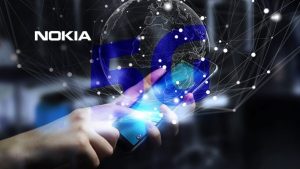
Nokia has been at the forefront of 5G innovation, establishing itself as a key player in the global market. Its recent ventures underscore its commitment to advancing connectivity.
A Multi-Billion Dollar Partnership in India
In collaboration with Bharti Airtel, Nokia is rolling out 5G infrastructure across India. With a population exceeding 1.4 billion, India presents unique challenges in connectivity, including urban congestion and rural isolation. This partnership is a step toward bridging these gaps and fostering innovation in sectors like agriculture, telemedicine, and e-commerce.
Acquisition of Rapid’s API Hub
Nokia’s acquisition of Rapid’s API marketplace highlights its strategic shift toward monetizing 5G. By offering application programming interfaces (APIs), Nokia empowers developers to build new 5G-driven applications. These APIs could revolutionize industries by enabling real-time data processing, predictive analytics, and automation.
Case Study: India’s Digital Transformation
With Nokia’s infrastructure, remote villages in India are gaining access to the internet for the first time. Farmers use mobile apps to monitor crop health, students access online learning platforms, and small businesses reach customers worldwide.
3. Global Expansion of 5G Networks
Countries worldwide are racing to deploy 5G networks, recognizing their potential to drive economic growth and technological innovation.
Germany’s High-Speed Rail Project
On the Hamburg-Berlin ICE train route, Deutsche Bahn is integrating 5G to provide uninterrupted connectivity. Passengers now enjoy reliable internet, allowing them to work, stream, or stay connected on the move. This initiative is a model for other nations aiming to modernize public transportation.
Australia’s Rural Connectivity Push
In North Queensland, the activation of a Telstra macro tower brought Forrest Beach out of digital isolation. For years, residents struggled with poor connectivity, impacting education, healthcare, and local businesses. Today, 5G offers seamless communication, fostering economic growth and improving quality of life.
Impact of Global Expansion
The deployment of 5G in underserved areas not only connects people but also drives social and economic inclusion. From enabling remote work in rural towns to supporting e-learning in developing countries, 5G is narrowing the digital divide.
4. Innovative Applications of 5G

The true power of 5G lies in its ability to support groundbreaking applications across diverse sectors.
Autonomous Vehicles
In Ireland, Three Ireland is piloting 5G technologies for autonomous cars. These vehicles rely on split-second communication to navigate safely. With ultra-low latency, 5G enables real-time data exchange between cars, traffic lights, and infrastructure, reducing accidents and congestion.
Virtual Reality (VR) and Augmented Reality (AR)
From immersive gaming to virtual training sessions, 5G is making VR and AR more accessible. Healthcare professionals use VR for surgical simulations, while architects employ AR to visualize projects in real time.
Industrial IoT
Factories equipped with 5G-connected sensors can monitor equipment health, optimize production lines, and prevent downtime through predictive maintenance. In logistics, 5G-powered robots are revolutionizing inventory management.
Example: South Korea’s Robotics Revolution
South Korea is a global leader in 5G applications. Warehouses equipped with 5G-enabled robots handle inventory with precision, reducing human error and increasing efficiency.
5. Enhancing Transportation with 5G
Transportation systems worldwide are being redefined by 5G, improving both efficiency and passenger experience.
High-Speed Rail Connectivity
Germany’s integration of 5G on high-speed trains sets a new standard for public transit. Passengers no longer face interruptions during travel, enabling productive work and entertainment.
Smart Traffic Management
Cities are adopting 5G-enabled systems to manage traffic flow. Sensors installed at intersections communicate with vehicles and pedestrians, reducing congestion and enhancing safety.
Example: Singapore’s Smart Transit System
Singapore’s autonomous buses use 5G to interact with traffic lights and other vehicles. The result? Faster commutes, fewer accidents, and a sustainable transportation model.
6. Boost Mobile’s Transition in the U.S.
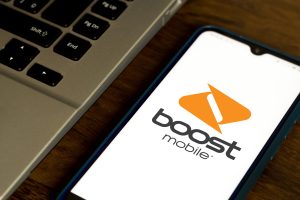
Boost Mobile is taking bold steps to establish itself as a leading player in the 5G market.
From MVNO to MNO
By transitioning from a Mobile Virtual Network Operator (MVNO) to a Mobile Network Operator (MNO), Boost gains greater control over its infrastructure. This allows for tailored 5G services, faster speeds, and enhanced reliability.
FCC Milestones
Boost’s efforts align with the Federal Communications Commission’s (FCC) 5G coverage mandates, ensuring underserved regions gain access to next-generation networks.
Case Study: Boost’s Growth Strategy
Boost’s expansion highlights a larger trend in the telecom industry: companies are focusing on innovation to meet the growing demand for 5G, especially in rural and suburban markets.
7. Policy and Regulatory Challenges
The deployment of 5G isn’t without obstacles. Governments and telecom companies must navigate regulatory complexities to ensure a smooth rollout.
Spectrum Allocation
With limited frequencies available, conflicts over spectrum allocation are common. Governments must balance the needs of telecom providers, broadcasters, and public services.
Data Privacy and Security
As more devices connect to 5G, concerns over cybersecurity grow. Companies must implement robust measures to protect user data from breaches.
Example: U.S. Policy Shifts
In the United States, debates over net neutrality and spectrum allocation have slowed 5G adoption. Policymakers must address these issues to unlock the full potential of 5G.
8. Bridging the Connectivity Gap with 5G
One of 5G’s most significant contributions is its ability to bring connectivity to underserved areas.
Rural Areas
Forrest Beach, Australia, exemplifies how 5G can transform rural communities. Improved internet access has enabled residents to adopt telemedicine, remote work, and online education.
Developing Nations
In regions like sub-Saharan Africa, 5G is fostering economic growth by supporting e-commerce, mobile banking, and e-learning platforms.
Example: Africa’s E-Learning Revolution
Telecom companies in Africa are leveraging 5G to connect remote schools, enabling students to access digital resources and participate in virtual classes.
9. Future Prospects of 5G
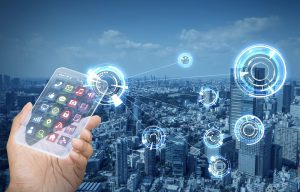
The future of 5G is limitless, with applications spanning every sector imaginable.
Healthcare
5G-powered devices can monitor patients remotely, enabling doctors to make real-time decisions. Surgeries performed via robotic arms controlled from another city or country are becoming a reality.
Smart Cities
With 5G, cities can optimize energy usage, implement smart waste management systems, and improve public safety through real-time surveillance.
Economic Impact
According to industry reports, 5G will contribute $13.1 trillion to the global economy by 2035, creating millions of jobs and driving technological advancements.
10. Conclusion: Embracing the 5G Revolution
5G is more than just faster internet—it’s a technology that will define the next decade. By enabling groundbreaking applications and bridging connectivity gaps, 5G has the power to transform societies.
Call to Action:
To fully realize the benefits of 5G, governments, businesses, and individuals must invest in infrastructure, innovation, and education. Collaboration across sectors will ensure that 5G becomes a catalyst for global progress.
In a world increasingly driven by digital solutions, 5G stands as a beacon of possibility, shaping a future where connectivity knows no bounds.






